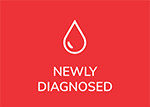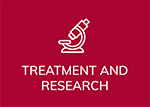Measurable residual disease (also sometimes called minimal residual disease) is an increasingly important concept in the management of CLL. After treatment, some amount of CLL remains in a patient’s body. These CLL cells can start to grow and multiply again causing a relapse of the disease. The amount of residual disease remaining after treatment can suggest how long a patient will spend without clinical progression (i.e., without needing more treatment). Thus, increasingly MRD is being used as a tool to monitor CLL progression and to measure how patients are responding to potential new therapies.
Please see the glossary of terms related to MRD if you are new to the topic.
At iwCLL 2019, Dr. Brian Koffman interviewed Dr. Andy Rawstron, a clinical scientist at the Leeds Teaching Hospitals NHS Trust. They discussed the concept of MRD as well as its current and future role in evaluating treatment response and disease management.
Takeaways:
- MRD is a more sensitive measure than clinical response.
- The threshold level for undetectable minimal residual disease (uMRD) is generally considered to be one CLL cell found out of 10,000 leukocytes (a.k.a. 0.01% or 10-4). However, this number is somewhat arbitrary because it is based on the capabilities of the most common technology being used, flow cytometry.
- Generally, people above the uMRD threshold are at greater risk of progression compared to people below the threshold.
- However, it is important to recognize that MRD is not black and white; there are shades of gray because each patient’s cancer cells proliferate at a different rate. For example, patients can be MRD positive but remain fairly stable for a number of years if the cells proliferate slowly.
- It is better to have less amount of the disease remaining at the end of treatment, but the rate of change may also be an important factor.
- MRD can be measured using different biomarker testing:
- 1. Flow cytometry
- Measures markers on the surface of the cell
- Can detect one CLL cell in 10,000 leukocytes (10-4)
- Is readily available in hospitals and can be processed quickly
- 2. Molecular assays (also called PCR or Next Generation Sequencing)
- Detects genetic abnormalities in DNA or RNA
- Are more precise and use fewer cells
- Can detect one CLL cell in 1,000,000 leukocytes (10–6)
- Must be sent out to a lab that specializes in processing this specific type of test, so the process is generally slower and more expensive
- 1. Flow cytometry
Conclusions:
MRD is a very sensitive way of determining how many cancer cells remain in the body after treatment. As MRD becomes more commonly used in the community clinic setting, it may be useful for determining how soon a patient needs to be seen for follow-up. Those patients who are MRD negative are very unlikely to progress within the next year, and thus can go longer between follow-up appointments. Further clinical trials are needed to determine whether MRD is a good marker for making decisions about treatment regimens (i.e., determining whether to stop treatment, continue treatment, or try a different treatment).
Please enjoy this interview with Dr. Rawstron from September 2019 at iwCLL in Edinburgh, Scotland.
If you are interested in a more in-depth discussion of MRD and its role in CLL management, please check out our archived webinar “MRD: What Should it Mean to Me?”. In it, Dr. Anthony Mato and Dr. Brian Koffman discuss testing and research on MRD and its growing role in CLL management.
Take care of yourself first.
Ann Liu, PhD

















